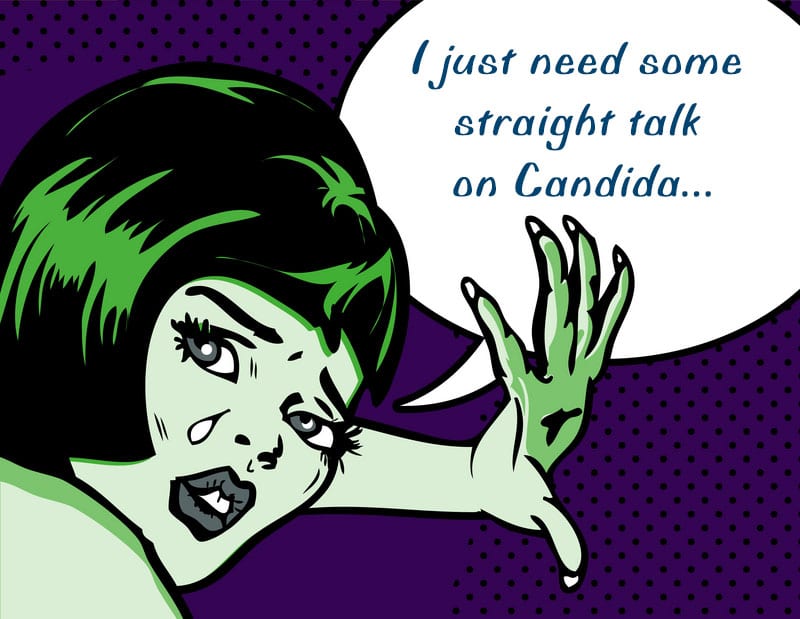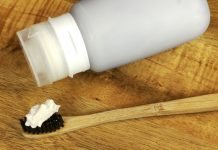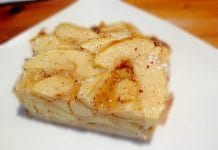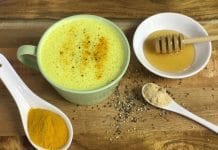Yeast overgrowth Funny topic for a header
I had a conversation yesterday with a friend about the sensitive subject of Thrush and was asked how do you know what the symptoms are and further more how do you know if it’s caused by a yeast overgrowth.
Thrush is just one of the many symptoms of a yeast overgrowth or Candidiasis.

Symptoms you may experience if you develop vaginal thrush include:
- Vaginal discomfort – itching or burning
- A thick, white discharge with a ‘cottage cheese’ appearance and yeasty smell
- Redness or swelling of the vagina or vulva
- Stinging or burning while urinating or during sex
- Splits in the genital skin.
To make a diagnosis of vaginal thrush, your doctor will need to:
- Examine your genitals
- Take a swab from the affected area.
Understanding Candidiasis or Yeast Overgrowth
Candida albicans is one of the most common types of unfriendly bacteria/organisms that co-exist in small numbers in our digestive tract and in a woman’s vagina alongside the friendly microorganisms. Now as long as we provide the friendly bacteria a reasonably good diet and avoid using certain drugs, they will greatly outnumber the unfriendly microbes and keep them from causing trouble. However if the environment of our digestive tract becomes imbalanced we become prime targets for recurring illness and disease. Many health practitioners believe that all chronic health problems originate in the intestines.
What Causes An Imbalance In The Environment Of The Intestinal Tract.
Candida thrives when you have a diet that consists of simple carbohydrates, high sugar, fructose, refined flour products and other acid forming foods. Certain drugs, especially antibiotics, the contraceptive pill and steroids (cortizone, ACTH and prednisone) will also damage the friendly bacteria providing the perfect environment for Candida to grow abundantly. A single dose of antibiotics or steroids can upset the balance in the intestinal tract that can last indefinitely.
Other symptoms that Candida has been linked to include:
- Frequent infections
- Food allergies and intolerances
- Headaches
- Mental Fuzziness or head fog
- Constipation and or Diarrhea
- Fatigue
- Poor memory
- Depression, irritability
- Muscle aches
- Small joint pain
- Arthritis
- Gout
- Athlete’s foot, Tinea
- Sensitivities to chemicals and environment
- PMS
- Skin rashes (psoriasis, eczema, acne)
- Digestive disorders (colitis, IBS, Crohn’s disease)
- Chronic vaginitis (cystitis)
- Hormonal imbalances
- Ulcers and some forms of cancer
- Difficulties in losing weight
As you can see the list is long and can sometimes be very general or attributed to another disease but if left untreated Candida can cause toxic and long lasting health problems.
From Bruce Fife’s book “Coconut Cures”. He writes:
Candida is especially insidious because it is capable of changing its form if allowed to grow. If left unchallenged, candida converts from a single-celled form into a multi-celled or mycellial fungal form with hairy, root-like projections called rhizoids. These rhizoids penetrate into the intestinal wall. When candida or bacteria penetrate the intestinal wall it affects the intestines’ ability to absorb vitamins, minerals, amino acids, and fatty acids, leading to nutritional deficiencies. As the intestinal wall becomes perforated it allows bacteria, toxins, and undigested food to pass across the intestinal barrier and enter the bloodstream. This condition has been called leaky gut syndrome. Even relatively harmless bacteria, if allowed to enter the bloodstream can cause infections. This often results in chronic low-grade infections and inflammation that can lead to a number of symptoms and feelings of ill health. Undigested proteins from our food are allowed to pass through the intestinal wall and migrate into the bloodstream. the immune system identifies these food proteins as foreign invaders and initiates a frantic attack, resulting in allergy symptoms. So your food allergies may be caused by an imbalance in the microbial environment of your digestive tract. The entire body is affected by the health of the digestive tract.
So how do you test for Candida Albicans or Yeast Overgrowth?
In my case and many others there isn’t one clear pathway. Most doctors do not recognise it as an illness and therefore do not think it’s testable. But if you persist in looking, these are the tests that can be done.
Blood test – usually a finger prick. Blood is tested for antibodies. If the antibodies show up high then this is evidence of a candida overgrowth. This is the most reliable test.
Urine test – This test detects tartaric acid – a waste product of Candida yeast overgrowth. An elevated test means an overgrowth of Candida. This test can be unreliable so the blood test is more likely to give an accurate result.
Stool analysis – Your stool is directly analyzed for levels of yeast, pathogenic bacteria and friendly bacteria. However Candida often does not show up in this test, so the blood test is more reliable.
Spittle test –
Can’t say I’ve ever had any luck with this test. By far the most unreliable, but you may want to give it a shot.
1. When you get up in the morning, and before you brush your teeth, eat or drink anything, fill a glass with bottled water at room temperature.
2. Spit some saliva gently into the glass.
3. Come back every 20 minutes for the next hour and check for some of these tell-tale signs of Candida:
– ‘Strings’ coming down through the water from the saliva at the top
– Cloudy saliva sitting at the bottom of the glass
– Opaque specks of saliva suspended in the water
While they may be tell-tale signs of Candida they are probably tell-tale for so many other conditions.
The Questionnaire – Here’s the link to a Candida Questionnaire by Donna Gates
So as you can read Yeast Overgrowth, better known as Candida, is not to be taken lightly as the result can be quite severe. You only have to look at images on google to see the extent of what some people are dealing with.
The Best Way to Fight Off Candida or a Yeast Overgrowth
The best way to treat a yeast overgrowth is through diet. You will need to eliminate foods that feed the yeast overgrowth or Candida.
Eliminate – All sugars including fruit, simple carbohydrates, floured products and all processed foods.
Include in your diet – The foods that will help feed the good bacteria are foods high in fiber like whole grains (if you have developed intolerances to grains because of the yeast overgrowth then you will need to eliminate wheat and gluten), vegetables and some legumes.
Also make sure you eat a good source of protein from meat, chicken and fish as well as eggs.
Coconut meat is very high in fiber and helps feed the good bacteria. The MCFAs (Medium Chain Fatty Acids) in coconut oil will help kill candida and other disease-causing organisms, but will not harm friendly bacteria. Eating coconut and coconut oil daily can be a great aid in reestablishing and maintaining a healthy intestinal environment.
A good source of probiotics such as yoghurt, kefir, or cultured coconut and or vegetables will help reestablish the beneficial bacteria and fight off yeast overgrowth.
If you have any questions, stories or solutions to yeast overgrowth in your life please leave a comment below…






























